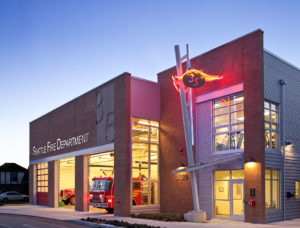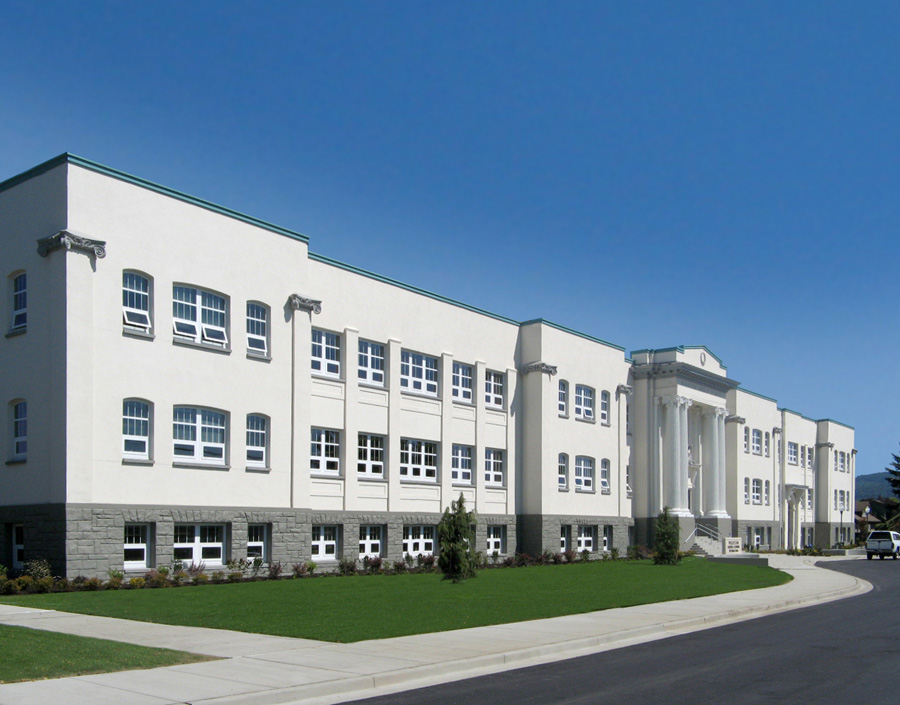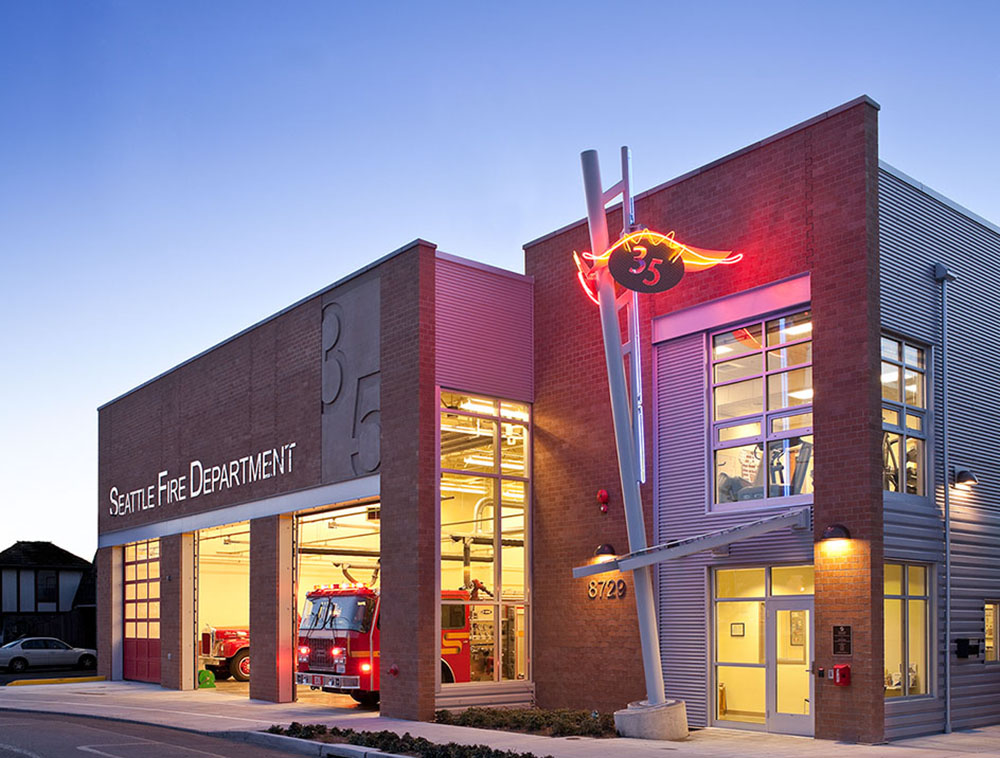Reflecting on the 60-year history of Reid Middleton, Inc., I am struck by the breadth and depth of structural engineering that has grown within the firm over the years, especially the steady growth and expanded diversity of our Structural Engineering practice over the last two decades.
Starting a Practice
Reid Middleton was co-founded in 1953 by James Reid, a licensed Civil, Structural, and Hydraulic Engineer, and Leroy Middleton, a licensed Land Surveyor. The two developed a consulting engineering practice that principally served municipal clients in the development of their infrastructure. Jim Reid’s structural engineering practice was focused on the design of ancillary facilities associated with public works construction: vaults, water tank foundations, retaining walls, and other miscellaneous (heavy civil) structures. In 1985, Hugh Townsend joined Reid Middleton with the task of building the firm’s structural engineering practice. His background in oceanography and structural engineering led him to focus on developing our waterfront design sector.
In 1991, I joined Reid Middleton as a young structural design engineer and worked alongside another young structural engineer, John Klekotka, in the Waterfront Group designing piers, wharves, breakwaters, marinas, and related waterfront infrastructure. Beginning about 1994, John and I would periodically perform structural engineering work traditionally outside of our well-established niche waterfront market sector. Projects included site and roadway structures such as retaining walls, underground vaults, industrial building foundations, pre-engineered warehouse buildings, residential lateral designs, and some bridge inspection and design.
As our structural engineering practice developed, we began working on more complex projects specifically targeted at buildings and bridges. Our Structural Engineering Group was formally started in 1999 and has grown to our current size of 16 people.

Structural Engineering for Life
One of the most satisfying aspects of our structural engineering practice at Reid Middleton has been the development of our knowledge of extreme events such as earthquake, flood, tsunami and explosion blast loads on buildings and infrastructure. Failure teaches us a lot about good design; so it is important that we learn about how the structures we design perform in extreme events. For almost two decades, Reid Middleton has helped organize and lead earthquake and tsunami reconnaissance teams to investigate these extreme events throughout the Pacific Rim. The main goal of these efforts has been to study earthquake, tsunami, and other extreme events and their impacts on buildings and infrastructure and, especially, the communities that these facilities serve. We put this knowledge to use every day to help our clients build and maintain safe buildings and reliable infrastructure. This dedication to improving our collective knowledge of earthquakes and seismic structural engineering is a cornerstone of our practice, and it has helped Reid Middleton establish itself as one of the preeminent earthquake engineering firms in the Pacific Northwest. Continued learning is a life-long goal of ours.
Amazing People, Amazing Practice
Good work starts with good people. As our structural engineering practice has grown and developed over the years, we have been fortunate to recruit, hire, and retain some of the top structural engineering talent in the area. Our staff is creative with a high attention to detail. We have developed some truly innovative design solutions from the application of state-of-the-art seismic damper technologies to improve seismic performance of hospitals, to fiber-wrapping brittle concrete columns of a 12-story clock tower, to an innovative use of shotcrete in a fast-track replacement of a 100-year old iconic school building.
Our structural engineers are active in the development of our profession and the communities where we live and work. We volunteer our design expertise for Housing Hope and other similar community-based programs, we volunteer our time to help clean up our communities, we volunteer our experience in K-12 and collegiate science and engineering educational programs, and we volunteer our knowledge to help educate the next generation of architects for their licensing examinations. I am continually amazed at our engineers’ creativity and dedication to our profession. Our staff thinks of their profession as not just a job, but as a career. If the dedication and creativity of our newer generation of structural engineers is any indication of the future of structural engineering, then our profession, and especially our company, is in very good hands.
Project Diversity Leads to Interesting Work

One of the main tenants of our structural engineering practice at Reid Middleton has always been to have a diverse design and consulting practice in varied market sectors for both public and private sector clients. The fast-paced world of private sector work helps us build efficiency in our work and keeps us sharp. Likewise, the methodical and planned nature of our public sector work builds our leadership skills in project management, project delivery, and public process. Doing work for both public and private sector clients is complementary, and we will continue building the future by keeping this balance.
We have specialized design expertise in Aviation, Civic, Commercial, Education, Healthcare, Industrial, Military, Transportation, and Waterfront market sectors. This diversity of project type requires sector-specific knowledge and expertise in building systems, construction materials, construction methods, and the nuances of project financing, permitting, and delivery. Our individual structural engineers benefit from this variety as it provides us a deeper understanding of specialized building types and systems specific to each market sector while providing career growth opportunities to help develop our market-specific expertise, presence, and portfolio. Project diversity is a key ingredient to keeping smart and talented engineers engaged in their profession and interested in their work.

Today, Looking Forward to Tomorrow
Today, structural engineering contributes about $4M annually (or about one third) to overall firm revenues. We now design aircraft hangars, terminal buildings, courthouses, libraries, fire stations, schools, hospitals, medical office buildings, commercial buildings, parking garages, bridges, as well as our long-standing portfolio of transportation and waterfront facilities. Our success has been the result of the collective effort of a lot of very talented and dedicated people and clients that have honored us with their trust and work. As we celebrate our 60th year in business this year, I am looking forward to what the future holds for our team of bright and dedicated staff.


Thanks for the snapshot of what Sixty years of skill, service and innovation is able to accomplish, congratulations!